Question
(a) (i) Explain the term balanced diet.
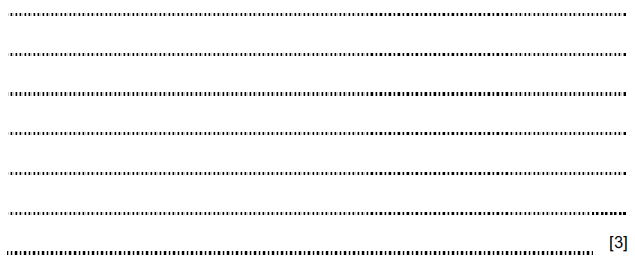
(ii) State three factors that influence a person’s nutritional needs.

(b) Glucose is absorbed in the small intestine and transported in the blood. The kidneys
filter the blood and reabsorb the glucose.
If the blood contains more than 180 mg of glucose per 100 cm3, the kidney cannot
reabsorb it all and some is present in the urine. This figure is called the renal
threshold.
A doctor suspects that a patient has diabetes because a urine test is positive for
glucose.
The patient takes a glucose tolerance test by drinking a solution of glucose. The doctor
records the patient’s blood glucose concentration at 30 minute intervals for five and a
half hours.
The results are plotted on Fig. 2.1.
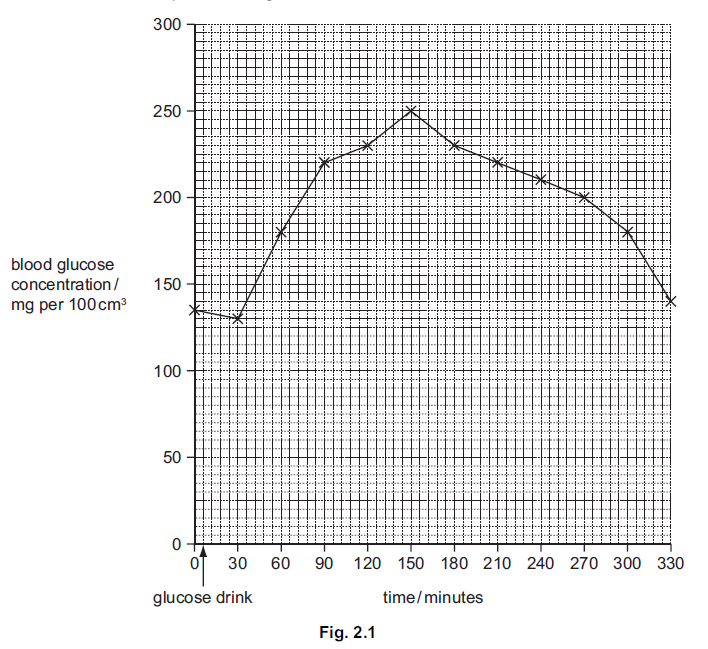
(i) Draw a horizontal line on Fig. 2.1 to show the renal threshold. [1]
(ii) State the time period when the kidney will produce urine containing glucose.
![]()
(iii) Sketch on Fig. 2.1 the blood glucose concentrations that the doctor might expect if
he repeated this test on someone who does not have diabetes. [1]
(c) People who do not have diabetes maintain their blood glucose concentration below
180 mg per 100 cm3.
Explain how the body does this.
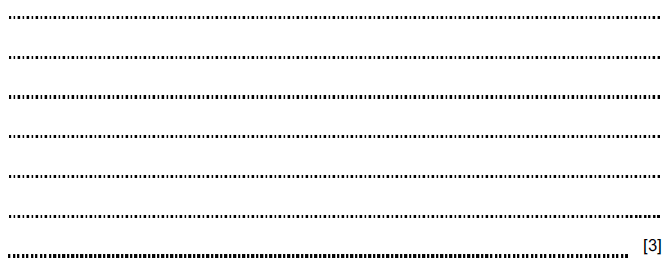
Answer/Explanation
Ans:
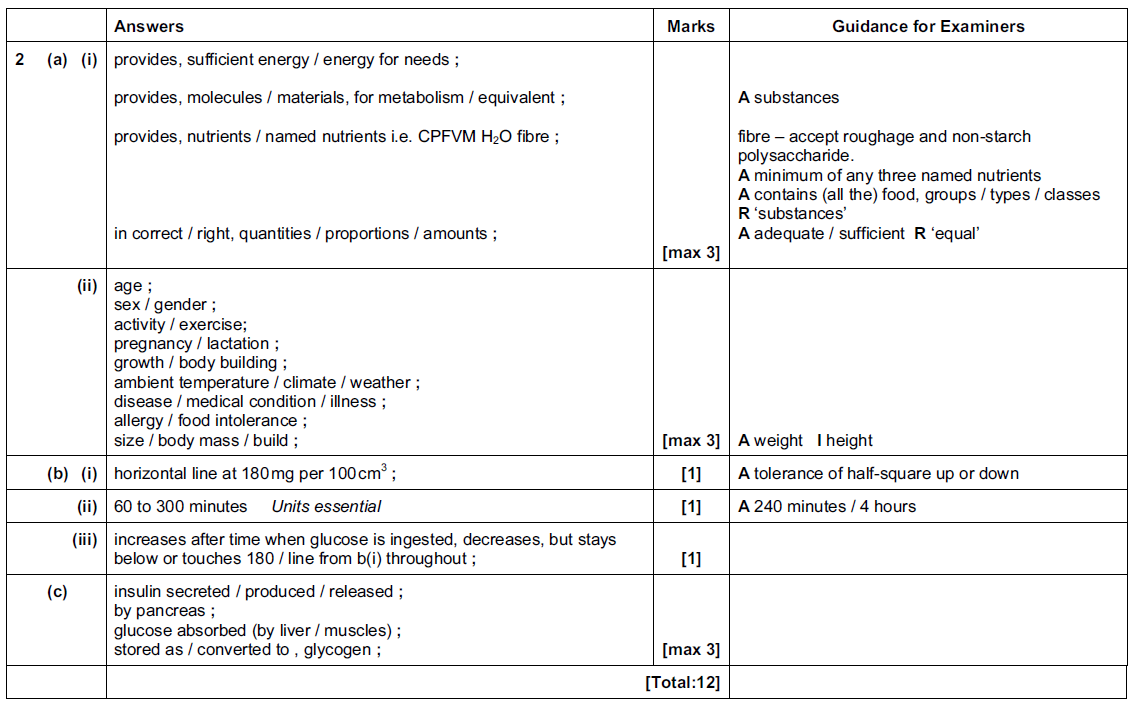
Question
(a) Some animals produce milk to feed their offspring.
Table 7.1 shows the mass of the substances found in 100g of milk from two animals.
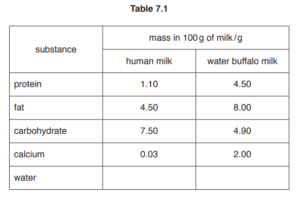
(i) Calculate the mass of water in both the human milk and the water buffalo milk.
Write your answers in Table 7.1.
Space for working.
(ii) State the name of the substance in Table 7.1 that is present in a higher concentration in
human milk than in water buffalo milk.
(iii) State the name of one component of a balanced diet that is missing from Table 7.1.
(iv) Producing milk for offspring is a characteristic of a particular group of animals.
State the name of this group of animals.
(b) State how young animals use the substances listed in Table 7.1.
protein
fat
carbohydrate
calcium
water
(c) An adult eats a high-fat diet.
State two health problems that could be caused by eating a high-fat diet.
1
2
Answer/Explanation
Ans
7 (a) (i) (human milk) 86.87 ;
(water buffalo milk) 80.60 ;
(a)(ii) carbohydrate / water ;
(a)(iii) fibre / iron / vitamins / named vitamin / AVP ;
(a)(iv) mammals ;
(b) protein: needed for growth / e.g. of growth / for repair / replacement ;
fat: needed for energy / insulation / storage / protection ;
carbohydrate: needed for energy ;
calcium: needed for making bones / teeth / AVP ;
water: solvent / lubricant / used in (metabolic)reactions AW / AVP ;
(c) obesity / AW ;
coronary heart disease / CHD / blockage of coronary arteries ;
AVP ;;
